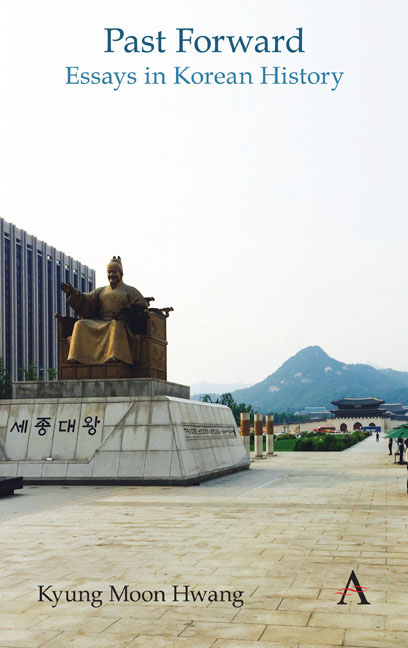Book contents
- Frontmatter
- Contents
- List of Figures
- Foreword
- Chronologies of Korean History
- Themes
- Acknowledgments
- Note on Romanization and Spelling
- Part I Circulating History
- Part II Durable Traditions
- 8 Marking the New Year
- 9 Slavery, Bondage, and Social Hierarchy
- 10 Marriage, Adultery, and Concubinage
- 11 Buddhism and Korean Identity
- 12 Christianity's Rapid Rise
- 13 Civil–Military Balance in Politics
- 14 Regionalism in Elections
- 15 Yeongnam's Strong Presidential Politics
- Part III Ancient Remains
- Part IV Dynastic Depths
- Part V Modern Origins
- Part VI Challenges of Nationhood
- Part VII History Makers
- Part VIII External Presences
- Part IX Trials of Modernization
- Part X Gripped by the Past
- Index
11 - Buddhism and Korean Identity
from Part II - Durable Traditions
- Frontmatter
- Contents
- List of Figures
- Foreword
- Chronologies of Korean History
- Themes
- Acknowledgments
- Note on Romanization and Spelling
- Part I Circulating History
- Part II Durable Traditions
- 8 Marking the New Year
- 9 Slavery, Bondage, and Social Hierarchy
- 10 Marriage, Adultery, and Concubinage
- 11 Buddhism and Korean Identity
- 12 Christianity's Rapid Rise
- 13 Civil–Military Balance in Politics
- 14 Regionalism in Elections
- 15 Yeongnam's Strong Presidential Politics
- Part III Ancient Remains
- Part IV Dynastic Depths
- Part V Modern Origins
- Part VI Challenges of Nationhood
- Part VII History Makers
- Part VIII External Presences
- Part IX Trials of Modernization
- Part X Gripped by the Past
- Index
Summary
Buddhism remains perhaps the cultural form most closely associated with Korea as a distinct civilization. Just as European countries can be viewed as products of a “Judeo-Christian” tradition, East Asia can be seen as “Buddhist-Confucian.” It has been said that, regardless of their formal religious identities, all Koreans (and perhaps all East Asians) are, at heart, Confucians. But it would be more accurate to state that all Koreans, whether they recognize this or not, are Buddhists.
The ties between Buddhism and Korea run so deep that Buddhism even preceded the formation of a coherent country on the peninsula and helped shape Korea into its early forms. Traditionally Buddhism has been traced back to the fourth century, when it was introduced from China, and thereafter it played an indispensable role in the political and cultural formation of the Three Kingdoms of Goguryeo, Baekje and Silla. The close relationship between institutionalized religion and statecraft, which would characterize Korean historical development for more than 1,500 years, began in this ancient era, as Buddhist clerics helped advise and provide legitimacy to political leaders.
As a religious entity as well, early Buddhism established abiding patterns in Korean civilization. The first of these was ecumenism, or the harmonization of religious diversity. Instead of excluding or repressing the indigenous folk religions on the peninsula, Buddhist leaders absorbed and even celebrated them. This approach, as part of Buddhism's core teachings of finding spiritual relief from the hardships of human existence, provided a durable connection to the populace and sustained the general approach of inclusivity up to the modern era. Embracing native religious forms in the early years also established Buddhism's close connection to Korea's environment and geography, as temples and rituals absorbed the shamanistic worship of spirits and deities attached to nature. The primacy of the terrain in Korean identity was further developed by Buddhist clerics who adapted the ideas of geomancy to conceive of the peninsula as a living being fed and shaped by its countless mountains and rivers.
At its peak in influence, Buddhism also inspired and promoted some of the greatest achievements in Korean art and architecture. But perhaps most impressive was the Buddhist clergy's extraordinary advances in printing technology.
- Type
- Chapter
- Information
- Past ForwardEssays in Korean History, pp. 29 - 32Publisher: Anthem PressPrint publication year: 2019



